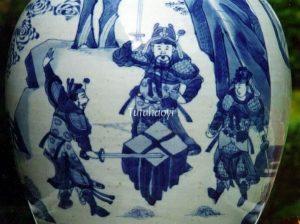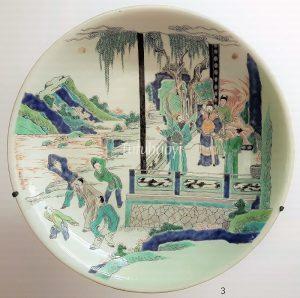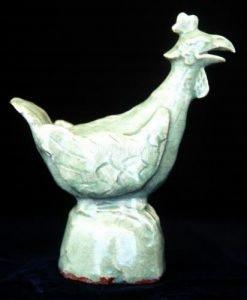Showing Results Containing
Do you wonder why two warriors are waving swords over a rock that looks like a cross bun? Let Dr Yibin Ni demystify this enigmatic scene for you, which illustrates the old Chinese saying ‘bedfellows dream different dreams’!
Story scenes painted on Chinese porcelains are sometimes mysterious and challenging to understand. Dr Yibin Ni, whose specialised research is to demystify figures and story scenes, and decode motifs, symbols and pun rebuses in Chinese art, is here...
How the daylily, whose Chinese name is ‘xuan 萱’, came to become a symbol for motherhood in Chinese culture is explained in the blog ‘
The Chinese character ‘tian 天’ from the phrase ‘tianzhu 天竹’ for ‘nandina’ is both a homophone and homograph of the character ‘tian 天’ for ‘heaven’. The character ‘xian 仙’ in the phrase ‘shuixian 水仙’ for ‘narcissus’, is both a homophone and homograph of the character ‘xian<...
The young duke of the State of Jin (晋) who was posthumously given the title Duke Ling of Jin, Jìn Líng Gōng (晋灵公, ? – 607 BCE), has been known as a ‘ruler who does not deserve his title (bu jun 不君)’. His despotic behaviour was enumerated in the records by historiographers. For example, he levied heavy taxes to b...
In the 14th-century historical novel, Romance of the Three Kingdoms (三国演义 – 甘露寺招亲), the generals in the Dongwu (东吴) kingdom conspired to murder Liu Bei (刘备), head of the Shu Han (蜀汉) kingdom, by inviting him to their territory with the promise of their king Sun Quan (孙权)’s sister for his wife. When Liu Bei...
A large Longquan pottery rooster sculpted on a rock sends good fortune to the receiver’s or owner’s family because da ji 大 鸡 for ‘large rooster’ sounds the sam...






